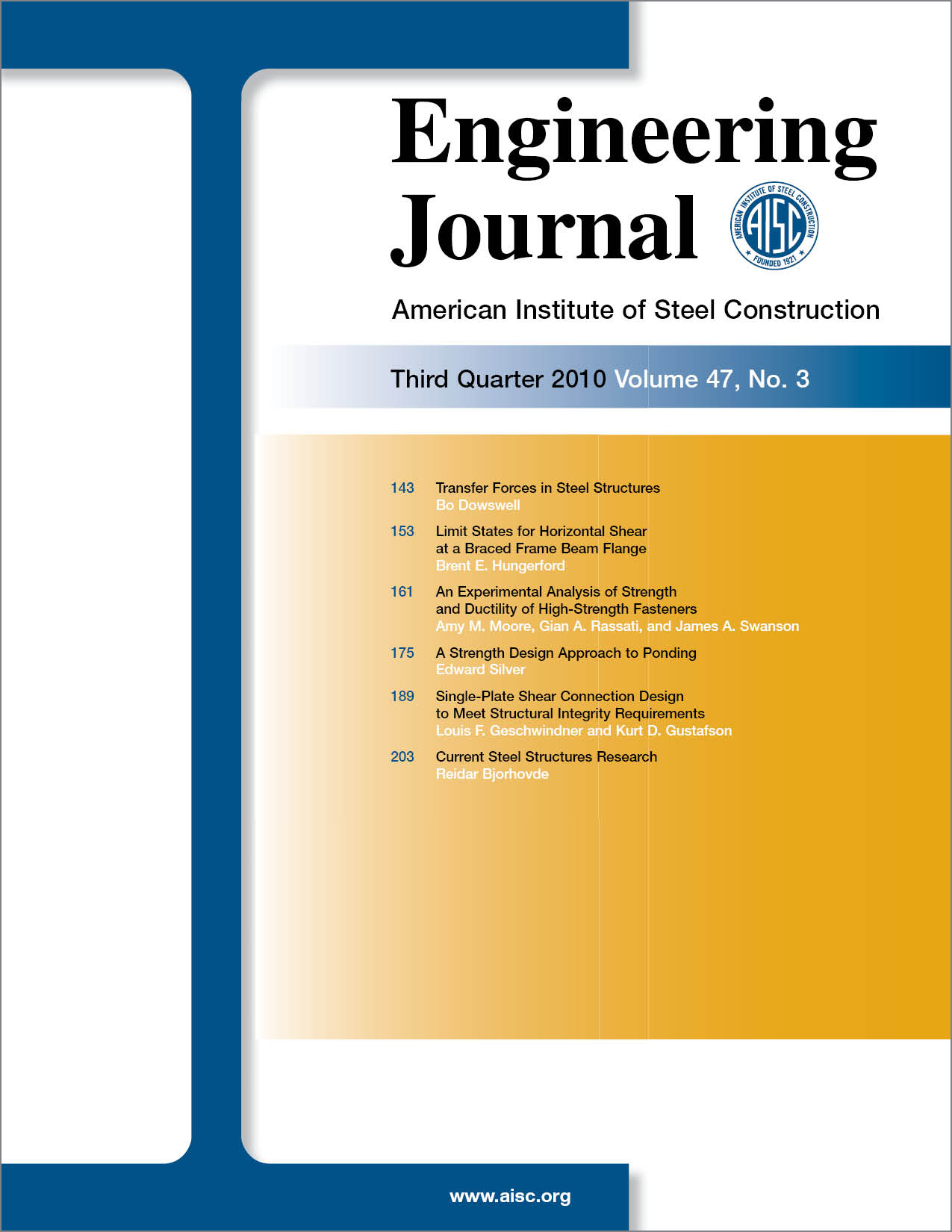Limit States for Horizontal Shear at a Braced Frame Beam Flange
DOI:
https://doi.org/10.62913/engj.v47i3.986Keywords:
beam flange, horizontal shear, limit statesAbstract
The most common design methodologies for bracing connections are based on the lower bound theorem. If the lower bound theorem is the basis cited for a steel connection design, the theorem's requirements must be satisfied. While the ductility requirement is essential to the theorem, it is the implications of the equilibrium and material strength limit requirements that will be investigated here for a portion of a common load path in a braced frame connection. Two limit states will be outlined that precisely define and expand on a limit state for web horizontal yielding. The limit states are also applicable to other types of connections with similar loading and geometry. These limit states are rational approaches to ensure that adequate resistance is provided to critical portions of a commonly assumed load path for braced frame connections. The limits likely will not control many typical braced frame configurations, but several conditions in which they may govern have been outlined for consideration. Additionally, it has been shown that it may be too conservative to require that all horizontal force from the gusset plate be transferred by shear into the beam web within the length of the gusset connection, although there are defined limits to the local beam capacity that can be obtained in these connections.

